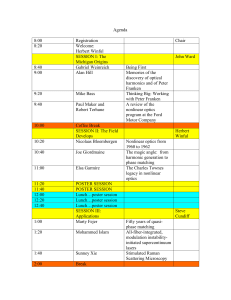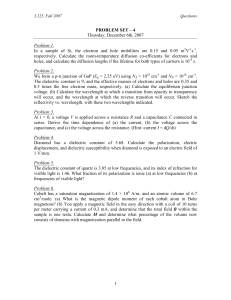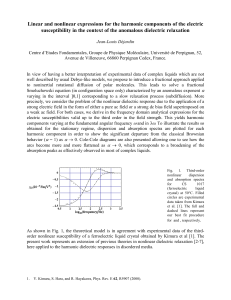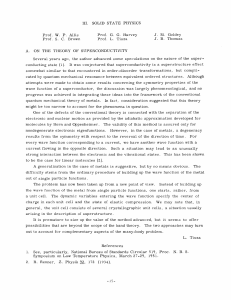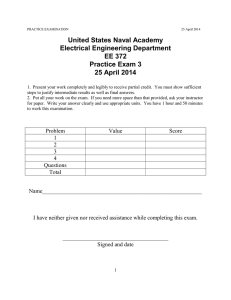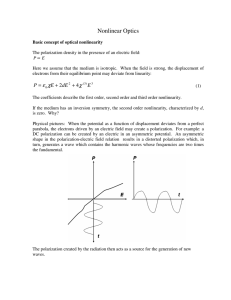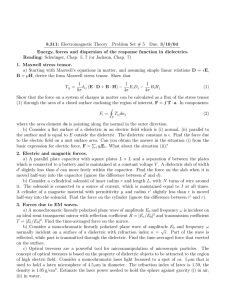PHYS 352, Optics, Spring 2013 The Basic Equation of Nonlinear Optics
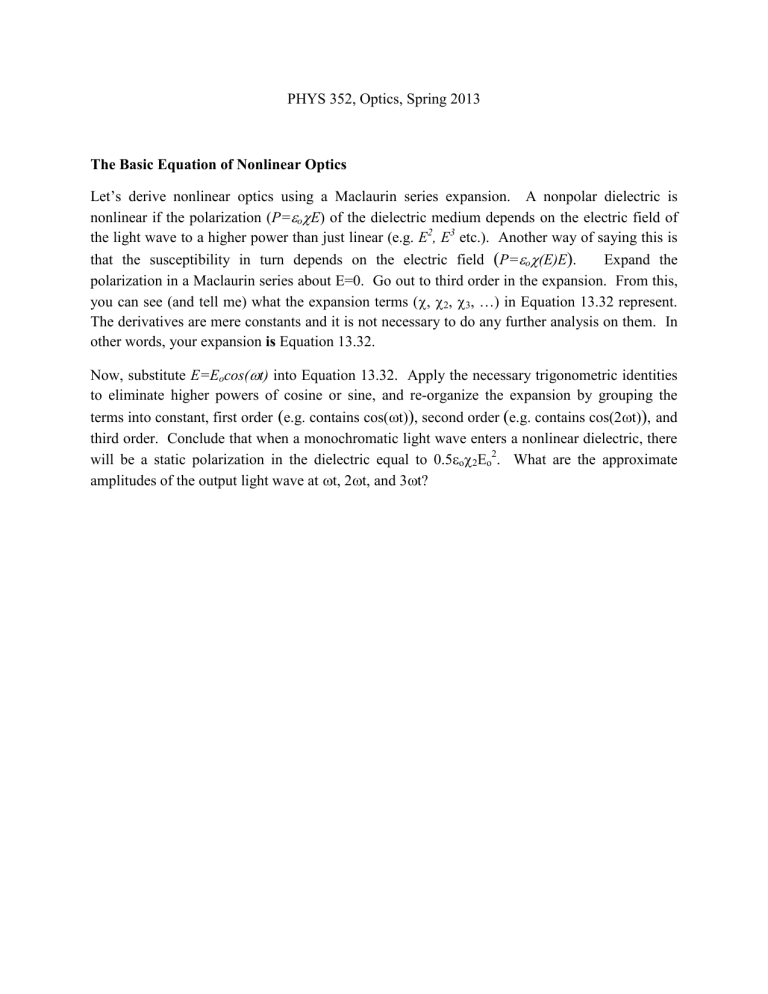
PHYS 352, Optics, Spring 2013
The Basic Equation of Nonlinear Optics
Let’s derive nonlinear optics using a Maclaurin series expansion. A nonpolar dielectric is nonlinear if the polarization ( P=
o
E ) of the dielectric medium depends on the electric field of the light wave to a higher power than just linear (e.g. E
2
, E
3
etc.). Another way of saying this is that the susceptibility in turn depends on the electric field ( P=
o
(E)E ) . Expand the polarization in a Maclaurin series about E=0. Go out to third order in the expansion. From this, you can see (and tell me) what the expansion terms (
,
2
,
3
, …) in Equation 13.32 represent.
The derivatives are mere constants and it is not necessary to do any further analysis on them. In other words, your expansion is Equation 13.32.
Now, substitute E=E o cos(
t) into Equation 13.32. Apply the necessary trigonometric identities to eliminate higher powers of cosine or sine, and re-organize the expansion by grouping the terms into constant, first order ( e.g. contains cos(
t) ) , second order ( e.g. contains cos(2
t) ) , and third order. Conclude that when a monochromatic light wave enters a nonlinear dielectric, there will be a static polarization in the dielectric equal to 0.5
o
2
E o
2
. What are the approximate amplitudes of the output light wave at
t, 2
t, and 3
t?




